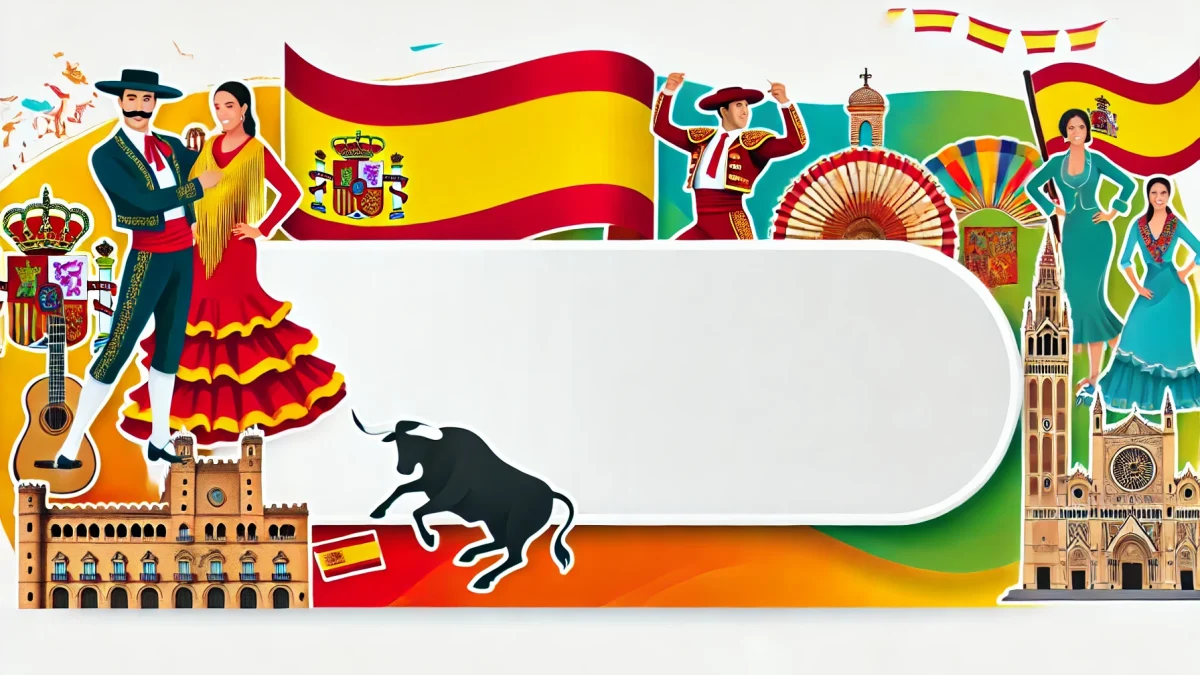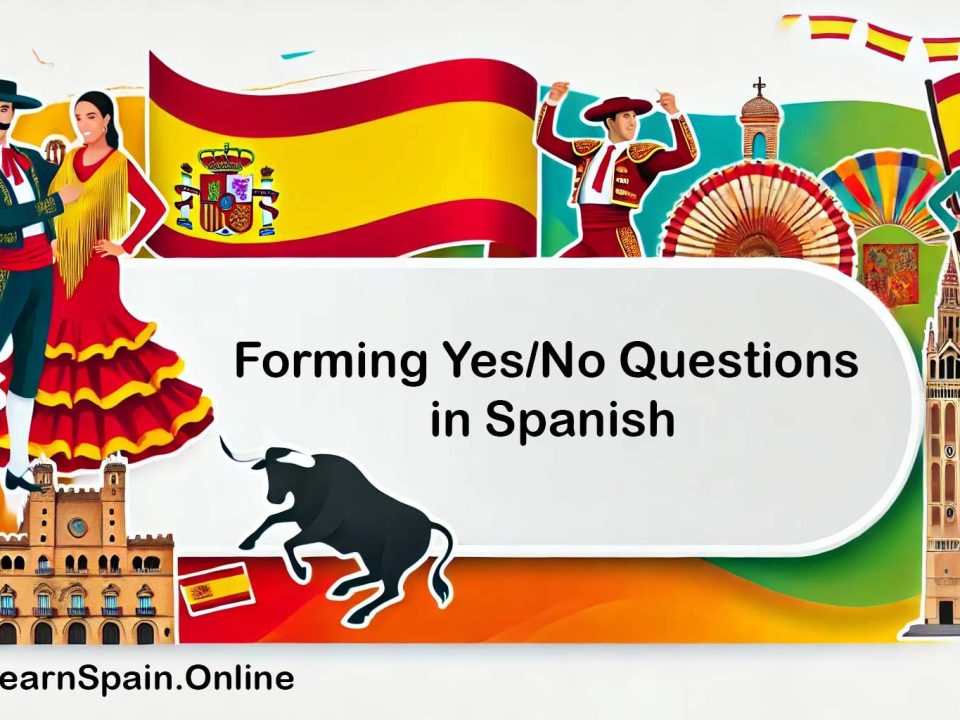
Present Tense of Regular Verbs in Spanish: A Comprehensive Guide
July 16, 2024
Plural Forms of Nouns in Spanish: A Comprehensive Guide
July 16, 2024Present Tense of Ser and Estar: A Comprehensive Guide
The verbs “ser” and “estar” both mean “to be” in Spanish, but they are used in different contexts and convey different meanings. Mastering these two verbs is essential for effective communication in Spanish. This comprehensive guide will explain the present tense conjugations of “ser” and “estar,” their usage, and provide plenty of examples to illustrate their differences and correct applications.
Conjugation of Ser and Estar in the Present Tense
Ser (to be)
“Ser” is used to describe essential characteristics, identity, origin, and time. Here are its present tense conjugations:
- Yo soy (I am)
- Tú eres (You are – informal)
- Él/Ella/Usted es (He/She/You are – formal)
- Nosotros/Nosotras somos (We are)
- Vosotros/Vosotras sois (You all are – informal, used in Spain)
- Ellos/Ellas/Ustedes son (They/You all are – formal)
Estar (to be)
“Estar” is used to describe states, locations, emotions, and conditions. Here are its present tense conjugations:
- Yo estoy (I am)
- Tú estás (You are – informal)
- Él/Ella/Usted está (He/She/You are – formal)
- Nosotros/Nosotras estamos (We are)
- Vosotros/Vosotras estáis (You all are – informal, used in Spain)
- Ellos/Ellas/Ustedes están (They/You all are – formal)
Usage of Ser
Identity and Profession
Use “ser” to describe someone’s identity, profession, or inherent characteristics.
- Yo soy estudiante. (I am a student.)
- Él es médico. (He is a doctor.)
Origin and Nationality
Use “ser” to indicate origin or nationality.
- Nosotros somos de España. (We are from Spain.)
- Ella es mexicana. (She is Mexican.)
Characteristics and Descriptions
Use “ser” to describe essential characteristics or inherent qualities.
- La casa es grande. (The house is big.)
- Tú eres inteligente. (You are intelligent.)
Time and Dates
Use “ser” to tell time and dates.
- Son las tres de la tarde. (It is three in the afternoon.)
- Hoy es lunes. (Today is Monday.)
Usage of Estar
Location
Use “estar” to indicate location, whether it is temporary or permanent.
- Estoy en la oficina. (I am in the office.)
- El libro está en la mesa. (The book is on the table.)
Conditions and States
Use “estar” to describe temporary conditions or states.
- Ellos están cansados. (They are tired.)
- La comida está caliente. (The food is hot.)
Emotions
Use “estar” to express emotions or feelings.
- Tú estás feliz. (You are happy.)
- Nosotros estamos tristes. (We are sad.)
Examples in Sentences
Ser
- Identity and Profession
- Yo soy profesor. (I am a teacher.)
- Ella es artista. (She is an artist.)
- Origin and Nationality
- Ellos son de Argentina. (They are from Argentina.)
- Tú eres colombiano. (You are Colombian.)
- Characteristics and Descriptions
- El coche es nuevo. (The car is new.)
- La película es interesante. (The movie is interesting.)
- Time and Dates
- Es la una de la tarde. (It is one in the afternoon.)
- Hoy es martes. (Today is Tuesday.)
Estar
- Location
- Estamos en casa. (We are at home.)
- ¿Dónde estás tú? (Where are you?)
- Conditions and States
- La puerta está cerrada. (The door is closed.)
- Los niños están enfermos. (The children are sick.)
- Emotions
- Estoy emocionado. (I am excited.)
- Ellas están nerviosas. (They are nervous.)
Common Mistakes and How to Avoid Them
- Mixing Up Ser and Estar: Remember that “ser” is used for permanent or lasting attributes, while “estar” is used for temporary states or locations.
- Incorrect: El agua es fría. (The water is cold.)
- Correct: El agua está fría. (The water is cold now.)
- Incorrect Conjugation: Ensure you use the correct present tense conjugation for the subject pronoun.
- Incorrect: Yo es estudiante. (I is a student.)
- Correct: Yo soy estudiante. (I am a student.)
- Using Ser for Locations: Always use “estar” for locations.
- Incorrect: La escuela es en la ciudad. (The school is in the city.)
- Correct: La escuela está en la ciudad. (The school is in the city.)
Practice Exercises
To reinforce your understanding of “ser” and “estar,” try these practice exercises:
- Conjugate “ser” and “estar” for all subject pronouns.
- Yo __ (ser) – I am
- Tú __ (estar) – You are
- Complete the sentences with the correct form of “ser” or “estar.”
- La fiesta _ en mi casa. (The party is at my house.)
- Nosotros _ contentos hoy. (We are happy today.)
- Translate the following sentences into Spanish:
- She is a lawyer.
- They are at the park.
- We are from Peru.
- I am tired.
Conclusion
Understanding the differences between “ser” and “estar” is crucial for effective communication in Spanish. By learning their conjugations and practicing their usage in various contexts, you will be able to convey meanings more accurately and naturally. Remember to use “ser” for identity, origin, characteristics, and time, and “estar” for location, conditions, and emotions. With regular practice and attention to detail, you will master the present tense of “ser” and “estar” and enhance your Spanish proficiency.
Start incorporating these verbs into your daily Spanish practice, and you’ll be well on your way to speaking like a native. ¡Buena suerte! (Good luck!)
Links:
Spanish Grammar
Spanish Vocabulary
Spanish Listening
Spanish Stories


